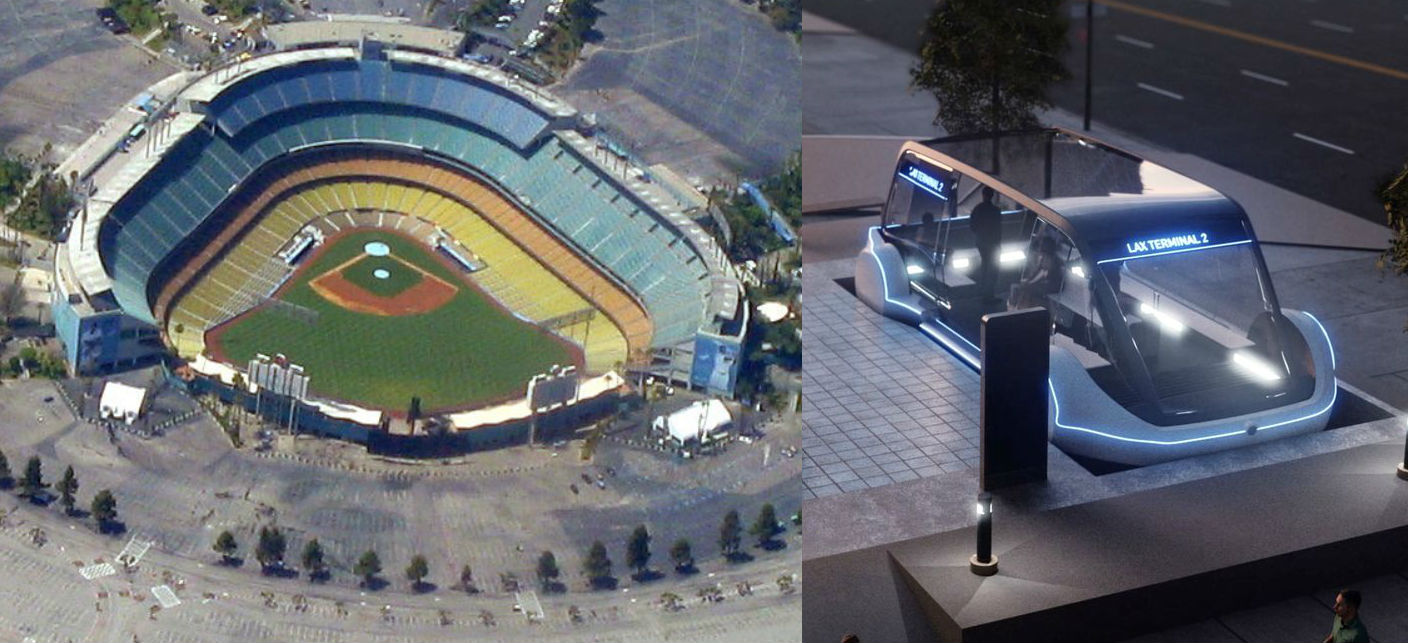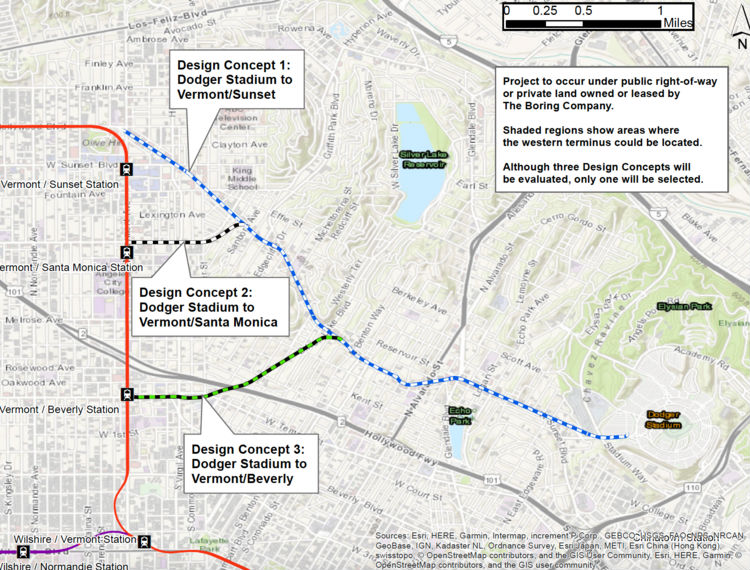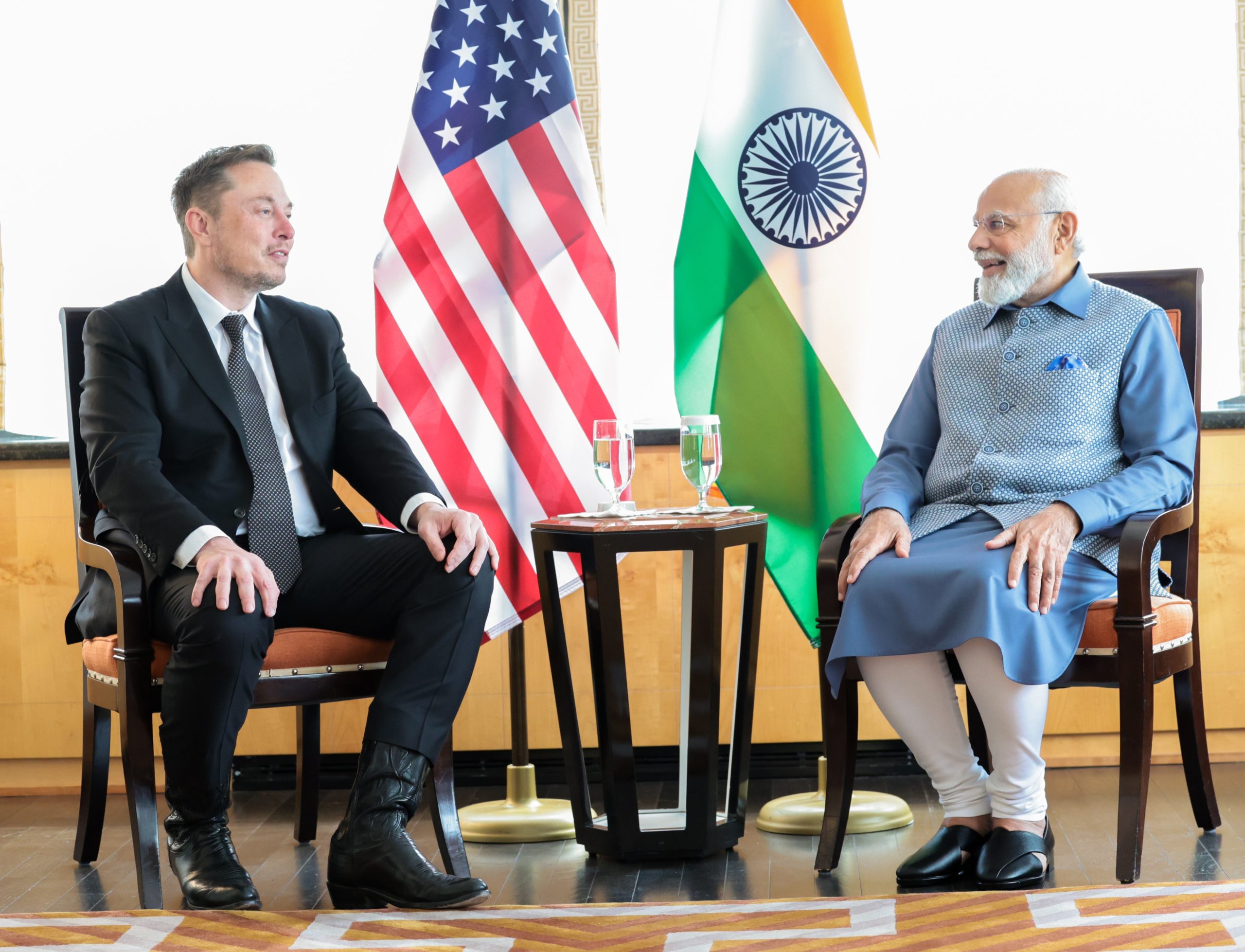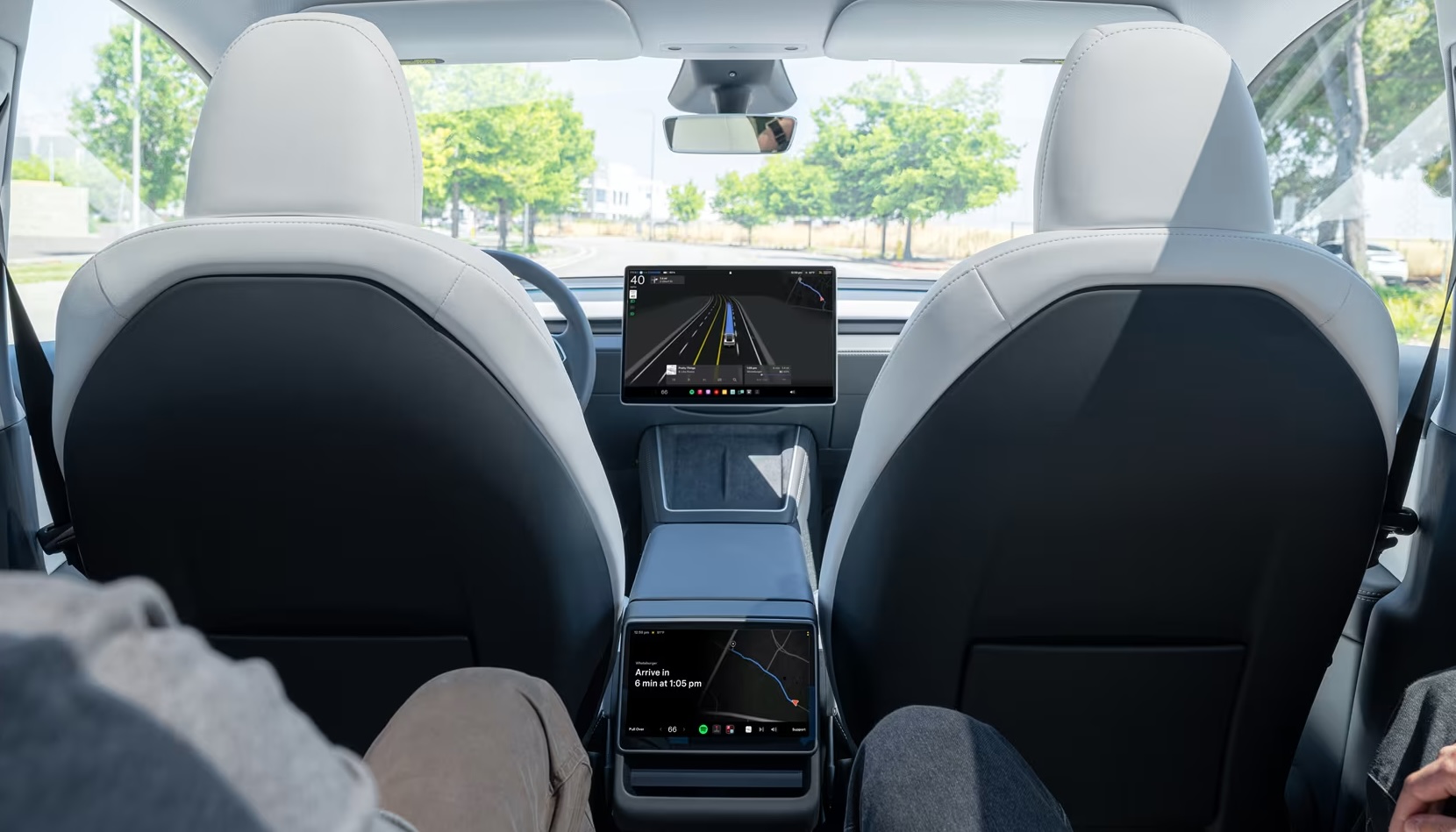

News
Elon Musk’s Boring Company proposes tunnel system leading to LA Dodgers Stadium
The Boring Company has unveiled a proposal to build a 3.6-mile tunnel system under Los Angeles designed to transport commuters to the Dodgers Stadium. Dubbed as the “Dugout Loop,” the tunneling startup’s project aims to transport people to the stadium in under 4 minutes.
The LA Dodgers Stadium is one of the city’s most prominent landmarks, where events such as games and concerts are held. The stadium in itself is massive, with a seating capacity of 56,000. Unfortunately for Los Angeles residents, getting to the Dodgers Stadium is nothing short of a traffic-inducing nightmare. During peak season, it is not rare to see vehicles being backed up for miles in seemingly unmoving traffic. This makes the travel time to the stadium, especially for commuters with their own cars, an unnecessarily long and aggravating affair.
This makes the LA Dugout Loop the perfect project for the Boring Company, a tunneling startup conceived by SpaceX and Tesla CEO Elon Musk due to his experiences in traffic. The Boring Company is currently involved in several projects, the most prominent of which is the downtown Chicago-O’Hare high-speed transport system, which is expected to break ground as soon as its permits are completed. A test tunnel under SpaceX’s headquarters in Hawthorne is also nearing completion.

The 3.6-mile Dugout Loop will begin at the Dodger Stadium property and run under Vin Scully Avenue and Sunset Boulevard. The Boring Company has not announced the starting point of the tunnel system, but there are currently three options being explored. All of these options — Vermont/Sunset, Vermont/Santa Monica or Vermont/Beverly — are selected specifically to be close to Metro Red Line stations.
The Los Angeles Bureau of Engineering (LABOE) has posted a document covering some of the finer details of Boring Company’s proposed project, including the design of the tunnels, how the electric pods in the Loop system will work, and the accessibility of the tunnels themselves. The document, which could be viewed in full here, notes that the Boring Company plans to use access shafts that would serve as tunnel access points for ventilation, emergency exit, and general access. These would be spaced approximately 0.5 miles apart, totaling about three to six locations located along the proposed Main Artery Tunnel alignment.
- The Boring Company’s eastern terminus configuration for the Dugout Loop. [Credit: The Boring Company]
- The Boring Company’s western terminus configuration for the Dugout Loop. [Credit: The Boring Company]
The transport pods would be stored in parking spaces, parking garages, or car racks at Loop Lift locations. Lastly, the LABOE document also mentioned that initially, commuters who wish to use the Dugout Loop would book timeslots online or on the phone in advance. Initial operations of the tunnel system would be limited to around 1,400 people, but depending on community feedback, the tunneling startup could increase ridership to about 2,800 people per event. The ability to purchase tickets for the Dugout Loop onsite is also on the table.
The Boring Company’s proposed tunnel to the Dodgers Stadium has gained the support of some of the city’s officials. In a statement to WIRED, LA Mayor Eric Garcetti described the project as a good example of the private and public sector working together.
“It’s a great example of public-private partnership. We always reimagine the future in Los Angeles. We’ve always looked for new ways to move around,” the LA mayor said.
Always exciting to see innovative ideas like the proposed Dugout Loop to @Dodgers Stadium that could help ease congestion on our roads and make our most iconic destinations more accessible to everyone. https://t.co/vleQtpUqnt
— Mayor Karen Bass (@MayorOfLA) August 16, 2018
Dodgers CFO Tucker Kain also expressed his support for the project, stating that the team is always supportive of novel ways to get fans to games in a more comfortable manner.
“We were excited when the Boring Company came to us with this project. Whether it is flying overhead in an aerial transit system or bypassing traffic through an underground tunnel, we are always looking for innovative ways to make it easier for Dodgers fans to get to a game. We are committed to working with our neighbors and fans as the project moves forward,” Kain said in a statement to ABC7.
Construction of the proposed tunnel project is estimated to take about 14 months to complete. The tunneling startup is making its proposal for the Dugout Loop available for public review from August 16 to September 17. A hearing will also be held at the Dodgers Stadium on August 28.
News
Tesla launches in India with Model Y, showing pricing will be biggest challenge
Tesla finally got its Model Y launched in India, but it will surely come at a price for consumers.

Tesla has officially launched in India following years of delays, as it brought its Model Y to the market for the first time on Tuesday.
However, the launch showed that pricing is going to be its biggest challenge. The all-electric Model Y is priced significantly higher than in other major markets in which Tesla operates.
On Tuesday, Tesla’s Model Y went up for sale for 59,89,000 rupees for the Rear-Wheel Drive configuration, while the Long Range Rear-Wheel Drive was priced at 67,89,000.
This equates to $69,686 for the RWD and $78,994 for the Long Range RWD, a substantial markup compared to what these cars sell for in the United States.
🚨 Here’s the difference in price for the Tesla Model Y in the U.S. compared to India.
🚨 59,89,000 is $69,686
🚨 67,89,000 is $78,994 pic.twitter.com/7EUzyWLcED— TESLARATI (@Teslarati) July 15, 2025
Deliveries are currently scheduled for the third quarter, and it will be interesting to see how many units they can sell in the market at this price point.
The price includes tariffs and additional fees that are applied by the Indian government, which has aimed to work with foreign automakers to come to terms on lower duties that increase vehicle cost.
Tesla Model Y seen testing under wraps in India ahead of launch
There is a chance that these duties will be removed, which would create a more stable and affordable pricing model for Tesla in the future. President Trump and Indian Prime Minister Narendra Modi continue to iron out those details.
Maharashtra Chief Minister Devendra Fadnavis said to reporters outside the company’s new outlet in the region (via Reuters):
“In the future, we wish to see R&D and manufacturing done in India, and I am sure at an appropriate stage, Tesla will think about it.”
It appears to be eerily similar to the same “game of chicken” Tesla played with Indian government officials for the past few years. Tesla has always wanted to enter India, but was unable to do so due to these import duties.
India wanted Tesla to commit to building a Gigafactory in the country, but Tesla wanted to test demand first.
It seems this could be that demand test, and the duties are going to have a significant impact on what demand will actually be.
Elon Musk
Tesla ups Robotaxi fare price to another comical figure with service area expansion
Tesla upped its fare price for a Robotaxi ride from $4.20 to, you guessed it, $6.90.

Tesla has upped its fare price for the Robotaxi platform in Austin for the first time since its launch on June 22. The increase came on the same day that Tesla expanded its Service Area for the Robotaxi ride-hailing service, offering rides to a broader portion of the city.
The price is up from $4.20, a figure that many Tesla fans will find amusing, considering CEO Elon Musk has used that number, as well as ’69,’ as a light-hearted attempt at comedy over the past several years.
Musk confirmed yesterday that Tesla would up the price per ride from that $4.20 point to $6.90. Are we really surprised that is what the company decided on, as the expansion of the Service Area also took effect on Monday?
But the price is now a princely $6.90, as foretold in the prophecy 😂
— Elon Musk (@elonmusk) July 14, 2025
The Service Area expansion was also somewhat of a joke too, especially considering the shape of the new region where the driverless service can travel.
I wrote yesterday about how it might be funny, but in reality, it is more of a message to competitors that Tesla can expand in Austin wherever it wants at any time.
Tesla’s Robotaxi expansion wasn’t a joke, it was a warning to competitors
It was only a matter of time before the Robotaxi platform would subject riders to a higher, flat fee for a ride. This is primarily due to two reasons: the size of the access program is increasing, and, more importantly, the service area is expanding in size.
Tesla has already surpassed Waymo in Austin in terms of its service area, which is roughly five square miles larger. Waymo launched driverless rides to the public back in March, while Tesla’s just became available to a small group in June. Tesla has already expanded it, allowing new members to hail a ride from a driverless Model Y nearly every day.
The Robotaxi app is also becoming more robust as Tesla is adding new features with updates. It has already been updated on two occasions, with the most recent improvements being rolled out yesterday.
Tesla updates Robotaxi app with several big changes, including wider service area
News
Tesla Model Y and Model 3 dominate U.S. EV sales despite headwinds
Tesla’s two mainstream vehicles accounted for more than 40% of all EVs sold in the United States in Q2 2025.

Tesla’s Model Y and Model 3 remained the top-selling electric vehicles in the U.S. during Q2 2025, even as the broader EV market dipped 6.3% year-over-year.
The Model Y logged 86,120 units sold, followed by the Model 3 at 48,803. This means that Tesla’s two mainstream vehicles accounted for 43% of all EVs sold in the United States during the second quarter, as per data from Cox Automotive.
Tesla leads amid tax credit uncertainty and a tough first half
Tesla’s performance in Q2 is notable given a series of hurdles earlier in the year. The company temporarily paused Model Y deliveries in Q1 as it transitioned to the production of the new Model Y, and its retail presence was hit by protests and vandalism tied to political backlash against CEO Elon Musk. The fallout carried into Q2, yet Tesla’s two mass-market vehicles still outsold the next eight EVs combined.
Q2 marked just the third-ever YoY decline in quarterly EV sales, totaling 310,839 units. Electric vehicle sales, however, were still up 4.9% from Q1 and reached a record 607,089 units in the first half of 2025. Analysts also expect a surge in Q3 as buyers rush to qualify for federal EV tax credits before they expire on October 1, Cox Automotive noted in a post.
Legacy rivals gain ground, but Tesla holds its commanding lead
General Motors more than doubled its EV volume in the first half of 2025, selling over 78,000 units and boosting its EV market share to 12.9%. Chevrolet became the second-best-selling EV brand, pushing GM past Ford and Hyundai. Tesla, however, still retained a commanding 44.7% electric vehicle market share despite a 12% drop in in Q2 revenue, following a decline of almost 9% in Q1.
Incentives reached record highs in Q2, averaging 14.8% of transaction prices, roughly $8,500 per vehicle. As government support winds down, the used EV market is also gaining momentum, with over 100,000 used EVs sold in Q2.
Q2 2025 Kelley Blue Book EV Sales Report by Simon Alvarez on Scribd
-

 News3 days ago
News3 days agoTesla debuts hands-free Grok AI with update 2025.26: What you need to know
-

 Elon Musk1 week ago
Elon Musk1 week agoElon Musk confirms Grok 4 launch on July 9 with livestream event
-

 Elon Musk5 days ago
Elon Musk5 days agoxAI launches Grok 4 with new $300/month SuperGrok Heavy subscription
-

 News2 weeks ago
News2 weeks agoTesla Model 3 ranks as the safest new car in Europe for 2025, per Euro NCAP tests
-

 Elon Musk2 weeks ago
Elon Musk2 weeks agoxAI’s Memphis data center receives air permit despite community criticism
-

 News5 days ago
News5 days agoTesla begins Robotaxi certification push in Arizona: report
-

 Elon Musk2 weeks ago
Elon Musk2 weeks agoTesla reveals it is using AI to make factories more sustainable: here’s how
-

 Elon Musk2 weeks ago
Elon Musk2 weeks agoTesla scrambles after Musk sidekick exit, CEO takes over sales















